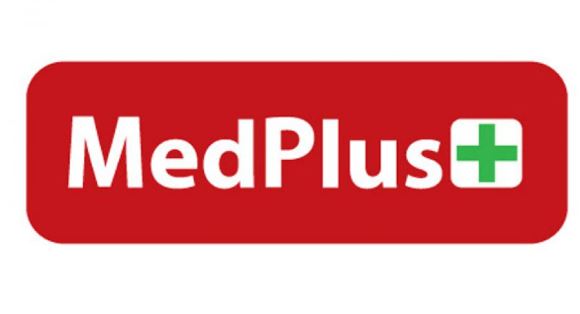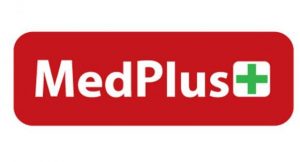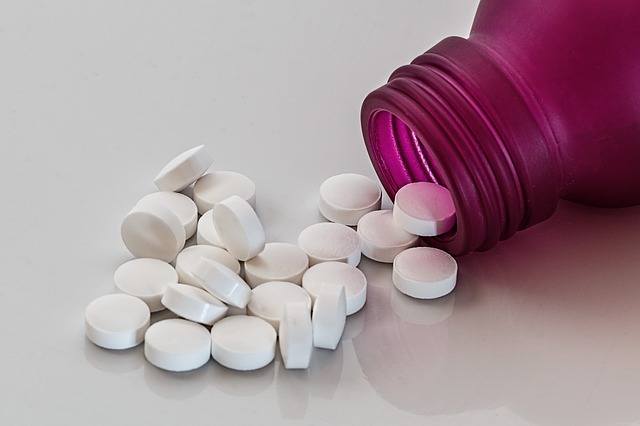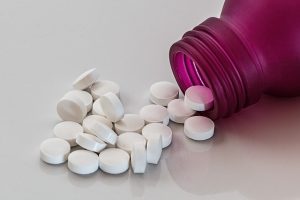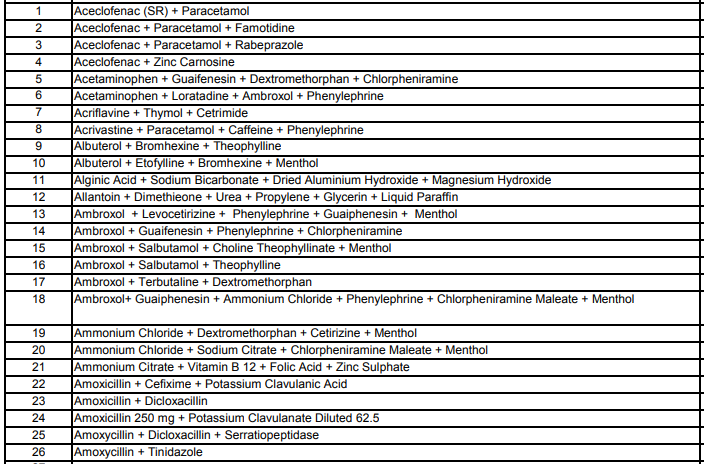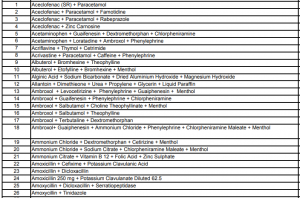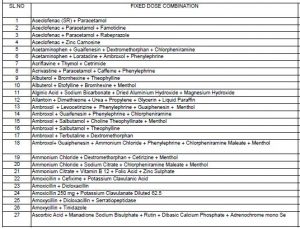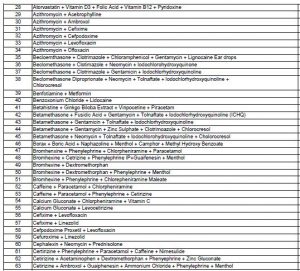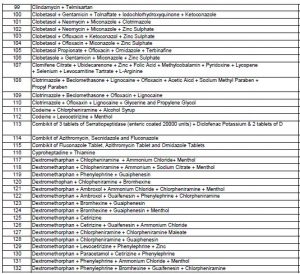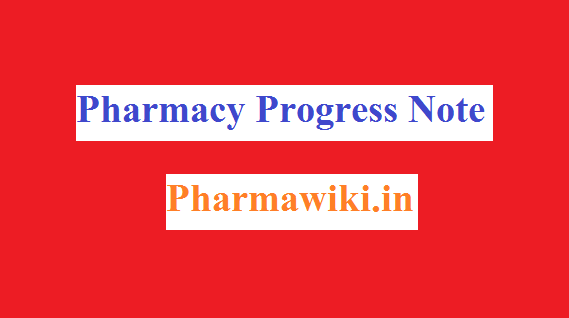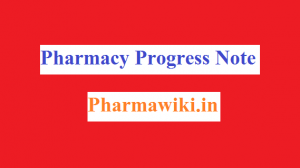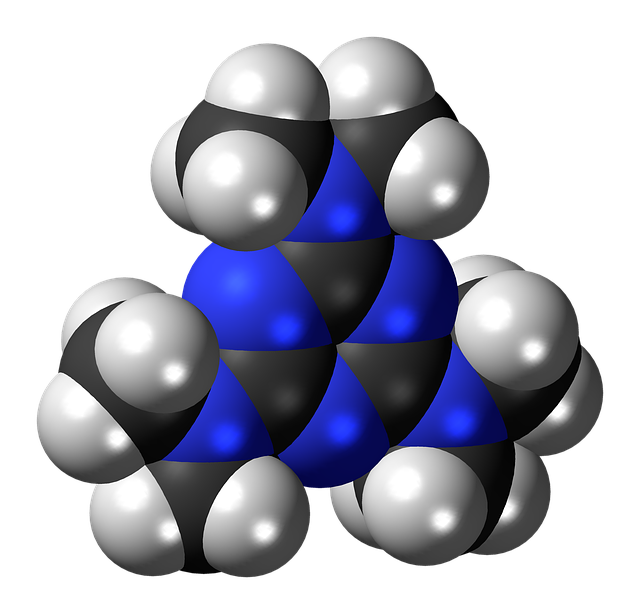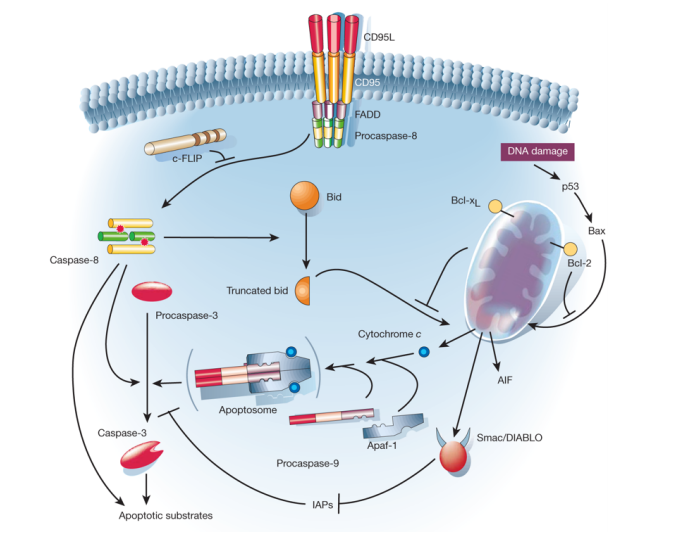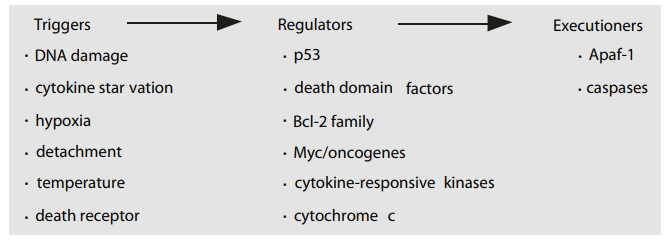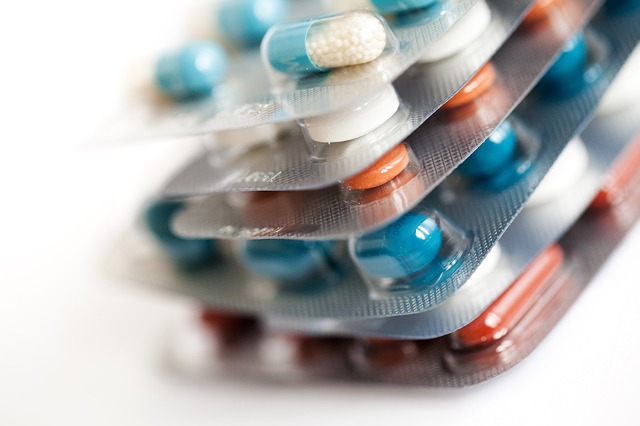Pharma QA Interview Question And Answer are here presented for you to help you to crack Quality Assurance Interview in Pharmaceutical manufacturing companies. Definition Of Quality Assurance along with its use In Pharma Industry are listed here below.
Quality Assurance Pharma Interview Questions – Part 1
Sample QA Interview Question: Define quality assurance
Ans) QA is a broad range of concept contains all the matters that individually or collectively effect the quality of a product. QA mainly concentrated on planning and documenting the procedures to assure the quality of the product.
Sample QA Interview Question: What needs to be checked during inprocess QA checks?
A.
a.) Environmental Monitoring
b.) Measured values obtained from the process equipment (ex:temperature,RPM etc.)
c.) Measured values obtained from persons (ex:timmings,entries etc.)
d.) Process attributes (Ex:weight,hardness,friability etc.)
Sample QA Interview Question: What precautions shall be taken while collecting inprocess samples ?
A. While collecting inprocess samples, avoid contamination of the product being sampled (Don’t collect samples with bare hands) & avoid contamination of sample taken.
Sample QA Interview Question: In a tablet manufacturing facility ‘positive’ pressure is maintained in processing area or service corridors?
A. In tablet manufacturing facilities, pressure gradients are maintained to avoid cross contamination of products through air. Usually processing areas are maintained under positive pressure with respect to service corridors.
Sample QA Interview Question: If sticking observed during tablet compression what may the probable reason for the same?
A.
1.If the granules are not dried properly sticking can
occur.
2.Too little or improper lubrication can also leads to
sticking.
3.Sticking can occur because of too much binder or
hygroscopic granular.
Sample QA Interview Question: What checks shall be carried out, while calibrating DT apparatus?
A. While calibrating DT apparatus, following checks shall be performed.
1.) Number of strokes per minute (Limit:29-32 cycles/min)
2.) Temperature by probe & standard thermometer
(Limit: 37 ± 1 OC).
3). Distance travelled by basket (Limit:53 -57mm)
Explain the difference between QC and QA?
Ans) QA provides the confidence that a product will full fill the quality requirements. QC determines and measures the product quality level.
QA Interview Question: . Expand cGMP and what is the difference between GMP and cGMP?
Ans) cGMP known as Current Good Manufacturing Practices. It is a USFDA regulations to assure proper design , manufacturing and control of manufacturing processes and services.
GMP-Good Manufacturing Practices. These are the standard guidelines given by Food and Drug administration to make sure that a product is manufactured with safety and quality. c in cGMP means current. It refers to recent and advance updates to these standard guidelines. cGMP is up to date standard reference guidelines.
Pharma QA Job Interview Guide |+| Quality Assurance Interview Questions – Pharmaceutical Industry

Pharma QA Job Interview Q&A: Tell me any five countries with their regulatory authorities?
Ans) India – Central Drugs Standard Control Organisation (CDSCO)
USA – United States Food and Drug Administation (USFDA)
UK – Medicines and Healthcare products Regulatory Agency (MHRA)
Japan- Ministry of Health Labour and Welfare (MHLW)
Australia- Therapeutics Goods Administration (TGA)
Sample QA Interview Question: What is In process checks?
A. In process checks are checks performed during an activity,In order to monitor and,if necessary,to adjust the process to ensure that product confirms to its specification.
Sample QA Interview Question: What is the difference between disintegration and dissolution?
A. Disintegration is a disaggregation process, in which an oral dosage form falls apart in to smaller aggregates.(Disintegration time is the ‘break up’ time of a solid dosage form).
Where as dissolution is a process by which solid substance enters in the solvent to yield a solution.It is controlled by the affinity between the solid substance and the solvent.
In other word disintegration is a subset of dissolution.
Sample QA Interview Question: Why do we calibrate a qualified equipment/instrument on definite intervals?
A. An equipment or instrument can ‘drift’ out of accuracy between the time of qualification and actual use.So it is recommended to calibrate and recalibrate the measuring devices and instruments on predetermined time intervals, to gain confidence on the accuracy of the data.
Pharma Quality Assurance Interview Q&A: What is room temperature?
Ans) 25 degree centigrade
Pharma Quality Assurance Interview Q&A: What is the Ultraviolet(UV) and visible spectroscopy range?
Ans) UV spectroscopy range 200-400 nm, Visible spectroscopy range 400 nm to 800nm.
Pharma Quality Assurance Interview Q&A: What is the use of UV Spectroscopy?
Ans) Spectroscopy used for detecting the functional groups, impurities. Qualitative and quantitative analysis can be done.
Pharma QA Job Interview Guide Part 2
Sample QA Interview Question: What is the difference between qualitative and quantitative analysis?
Ans) Qualitative analysis involves identification of the compound or chemical based on their chemical(absorption, emission )or physical properties(e.g Melting point, boiling point).
Quantitative analysis involves estimation or determination of concentration or amount of the chemical compounds or components.
Q5) Explain the principle of Ultraviolet spectroscopy?
Ans) UV spectroscopy uses light in the UV part of electromagnetic spectrum. UV absorption spectra arises in which molecule or atoms outer electrons absorb energy, undergoes transition from lower energy level to higher energy level. For each molecule, absorbance at wavelength is specific.
Q6) Explain about Beer Lamberts law?
Ans) It states that the intensity of monochromatic light absorbed by a substance dissolved in a fully transmitting solvent is directly proportional to the substance concentration and the path length of the light through the solution.
Q7) Explain the Infrared spectroscopy principle?
Ans) When a molecule absorbs the Infrared radiation, it vibrates and gives rise to packed Infrared(IR) absorption spectrum. This IR spectrum is specific for every different molecule absorbing the IR radiation, useful for its identification.
Q8) What is the body temperature?
Ans) 37 oCelsius or 98.6 oF
v Define pH? What is the pH of blood?
Ans) pH -Negative logarithm of hydrogen ion concentration. Blood pH-7.35 to 7.45.
Q10) Expand LCMS, HPLC,UPLC, TLC and GC?
Ans) LCMS- Liquid Chromatography
HPLC- High Performance Liquid Chromatography,
UPLC- Ultra High Performance Liquid Chomatography,
TLC- Thin Layer Chomatography,
GC- Gas Chromatography.
qc pharma interview questions for freshers
Q11) What is the HPLC principle?
Ans) It is a technique used for separating the mixture of components into individual components based on adsorption, partition, ion exchange and size exclusion principles. Stationary phase and mobile phase used in it. HPLC used for identification, quantification and purification of components form a mixture.
Q12) Explain HPLC instrumentation?
Ans) It involves solvent system, pump, Sample injector, HPLC columns, Detectors and Recorder. Firstly, solvent(mobile phase) is degassed for eliminating the bubbles. It is passed through the pump with a uniform pressure. The liquid sample is injected into the mobile phase flow stream. It passes through the stationary phase identified by the detectors and recorded.
Q13) In reverse phase HPLC, which type of stationary phase is used and give example?
Ans) Non polar stationary phase used
Ex: Silica gel C-18
Q14) What are the detectors used in HPLC?
Ans) UV detector, IR detector, Fluorescence detector, Mass spectroscopy, LC MS etc.
Q15) How to calculate Retention factor in paper chromatography?
Ans) Rf = Distance travelled by solute/ Distance travelled by solvent.
Q16) Define molarity?
Ans) Number of moles of solute per litre solution. Denoted with “M”
Quality Assurance Pharma Interview Questions – Part 2
Q17) Define Molality?
Ans) Number of moles of solute per kilogram solvent. Denoted with “m”
Q18) Define Normality?
Ans) Number of Number of moles equivalent per litre solution.
Q19) Molecular weight of oxygen?
Ans) 16
Difference between humidity and relative humidity?
Ans) Humidity – Measure of amount of water vapour present in the atmosphere.
Relative humidity- Water vapour amount exists in air expressed as a percentage of the amount needed for saturation at the same temperature.
Sample QA Interview Question: Why do we consider three consecutive runs/batches for process validation? Why not two or four?
A. The number of batches produced in the validation exercise should be sufficient to allow the normal extent of variation and trends to be established and to provide sufficient data for evaluation and reproducibility.
· First batch quality is accidental (co-incidental),
· Second batch quality is regular (accidental),
· Third batch quality is validation(conformation).
In 2 batch we cannot assure the reproducibility of data,4 batches can be taken but the time and cost are involved.
Sample QA Interview Question: Explain about revalidation criteria of AHU system?
A. AHU system shall be revalidated periodically as mentioned in the regulatory standards. AHU shall be revalidated in following cases also.
· When basic design of AHU is changed,
· When clean room volume is changed,
· When new equipment is installed
· When a construction is carried out, that calls for reconstruction of AHU system.
Sample QA Interview Question: What needs to be checked during AHU validation?
A. During AHU validation, following tests shall be carried out
· Filter efficiency test,
· Air velocity & number of air changes,
· Air flow pattern (visualization)
· Differential pressure, temperature and RH
· Static condition area qualification
· Dynamic condition qualification
· Non-viable count
· Microbial monitoring
· Area recovery and power failure study.
Sample QA Interview Question: Position of oblong tablets to be placed in hardness tester to determine the hardness? Lengthwise / widthwise?
A. Position of oblong tablets should be length wise because the probability of breakage is more in this position.
Sample QA Interview Question: Explain in detail about qualification of pharmaceutical water system?
A. Qualification of pharmaceutical water system involves three phases
· Phase -1
· Phase -2
· Phase -3
Phase -1
A test period of 2-4 weeks should be spent for monitoring the system intensively. During this period the system should operate continuously without failure or performance deviation.Water cannot be used for pharmaceutical manufacturing in this phase.The following should be included in testing approach.
· Under take chemical & microbiological testing in accordance with a defined plan.
· Sample incoming feed water daily to verify its quality.
· Sample each step of purification process daily.
· Sample each point of use daily.
· Develop appropriate operating ranges.
· Demonstrate production and delivery of product water of required quantity and quality.
· Use and refine the SOP’s for operation,maintenance,sanitization and trouble shooting.
· Verify provisional alert and action levels.
· Develop and refine test failure procedure.
Phase -2
A further test period of 2-4 weeks. Sampling scheme will be same as Phase – 1.Water can be used for manufacturing process in this phase.
Approach should also
· Demonstrate consistent operation within established ranges.
· Demonstrate consistent production & delivery of water of required quality and quantity.
Phase – 3
Phase 3 runs for one year after satisfactory completion of phase-2.Water can be used for manufacturing process during this process.
Objectives & Features of Phase -3
· Demonstrate extensive reliable performance.
· Ensure that seasonal variations are evaluated.
· The sample locations, sampling frequencies and test should be reduced to the normal routine pattern based on established procedures proven during Phase -1 & phase – 2.
Sample QA Interview Question: What are the recommended environmental monitoring limits for microbial contamination?
Sample QA Interview Question: What is the difference between calibration and Validation?
A. Calibration is a demonstration that, a particular
Instrument or device produces results with in specified limits by comparisons with those produced by a reference or traceable standard over an appropriate range of measurements.
Where as Validation is a documented program that provides high degree of assurance that a specific process, method or system consistently produces a result meeting pre-determined acceptance criteria.
In calibration performance of an instrument or device is comparing against a reference standard. But in validation such reference standard is not using.
Calibration ensures that instrument or measuring devices producing accurate results. Whereas validation demonstrates that a process, equipment, method or system produces consistent results (in other words, it ensures that uniforms batches are produced).
Sample QA Interview Question: Briefly explain about ICH climatic zones for stability testing & long term storage conditions?
A.ICH STABILITY ZONES
Zone
Type of Climate
Zone I
Temperate zone
Zone II
Mediterranean/subtropical zone
Zone III
Hot dry zone
Zone IVa
Hot humid/tropical zone
Zone IVb
ASEAN testing conditions hot/higher humidity
Long term Storage condition
Climatic Zone
Temperature
Humidity
Minimum Duration
Zone I
21ºC ± 2ºC
45% rH ± 5% rH
12 Months
Zone II
25ºC ± 2ºC
60% rH ± 5% rH
12 Months
Zone III
30ºC ± 2ºC
35% rH ± 5% rH
12 Months
Zone IV
30ºC ± 2ºC
65% rH ± 5% rH
12 Months
Zone IVb
30ºC ± 2ºC
75% rH ± 5% rH
12 Months
Refrigerated
5ºC ± 3ºC
No Humidity
12 Months
Frozen
-15ºC ± 5ºC
No Humidity
12 Months
Sample QA Interview Question: What is bracketing & matrixing in stability testing?
A.Both Matrixing & Bracketing’s are reduced stability testing designs
Bracketing
The design of a stability schedule, such that only samples of extremes of certain design factors (ex:strength,package size) are tested at all time points as in full design.The designs assumes that the stability of any intermediate level is represented by the stability of extremes tested.
Matrixing
The design of a stability schedule, such that a selected subset of possible samples for all factor combinations is tested at a specified time point.At a subsequent time point another subset of samples for all factor combination is tested.The design assumes that the stability of each subset samples tested represents the stability of all samples at a given time point.
There for a given time point other than initial & final ones not every batch on stability needs to be tested.
Sample QA Interview Question:What are the common variables in the manufacturing of tablets?
A.
· Particle size of the drug substance
· Bulk density of drug substance/excipients
· Powder load in granulator
· Amount & concentration of binder
· Mixer speed & mixing timings
· Granulation moisture content
· Milling conditions
· Lubricant blending times
· Tablet hardness
· Coating solution spray rate
Sample QA Interview Question: Whether bracketing & validation concept can be applied in process validation?
A.Both Matrixing & Bracketing’s can be applied in validation studies.
Matrixing
Different strength of same product
Different size of same equipment
Bracketting – Evaluating extremes
Largest and smallest fill volumes
Fastest and slowest operating speeds
1. What is an SOP ?
A Standard Operating Procedure (SOP) is a certain type of document that describes in a step-by-step outline form how to perform a particular task or operation. Everyone in a company must follow the same procedures to assure that tasks are performed consistently and correctly. Most companies have a wide variety of SOPs that describe how to do different tasks. In many companies technicians and operators are trained in how to follow individual SOPs and their training record specifies which SOPs they are trained on and are authorized to use.
2. What is 21 CFR part 11 ?
Title 21 CFR Part 11 of the Code of Federal Regulations deals with the Food and Drug Administration (FDA) guidelines on electronic records and electronic signatures in the United States. Part 11, as it is commonly called, defines the criteria under which electronic records and electronic signatures are considered to be trustworthy, reliable and equivalent to paper records
What are user requirements ?
User Requirements Specification describes what users require from the System. User requirement specifications are written early in the validation process, typically before the system is created. It is written by the System Owner and End Users, with input from Quality Assurance. Requirements outlined in the URS are usually tested in the Performance Qualification. User Requirements Specifications are not intended to be a technical document; readers with only a general knowledge of the system should be able to understand the requirements outlined in the URS.
4. What is a validation plan ?
Validation Plans define the scope and goals of a validation project. Validation plans are written before a validation project and are specific to a single validation project. Validation Plans can include:
Deliverables (Documents) to be generated during the validation process
Resources/Departments/Personnel to participate in the validation project
Time-Line for completing the validation project
5. What is an IQ document ?
Installation Qualifications are a collection of test cases used to verify the proper installation of a System. The requirement to properly install the system was defined in the Design Specification. Installation Qualifications must be performed before completing Operational Qualification or Performance Qualification.
6. What is an OQ Document ?
Operational Qualifications are a collection of test cases used to verify the proper functioning of a System. The operational qualification tests requirements defined in the Functional Requirements. Operational Qualifications are usually performed before the system is released for use.
7. What is a PQ Document ?
Performance Qualifications are a collection of test cases used to verify that a System performs as expected under simulated real-world conditions. The performance qualification tests requirements that were defined in the User Requirement Specification (or possibly the Functional Requirements). Due to the nature of performance qualifications, these tests are sometime conducted with power users as the system is being released.
8. What is a Validation Summary Report ?
Validation Summary Reports provide an overview of the entire validation project. When regulatory auditors review validation projects, they typically begin by reviewing the summary report. The validation summary report should include:
A description of the validation project
All test cases performed, including if those test cases passed without issue
All deviations reported, including how those deviations were resolved
9. What is a Change Request ?
Change Control is a general term describing the process of managing how changes are introduced into a controlled System. In validation, this means how changes are made to the validated system. Change control is required to demonstrate to regulatory authorities that validated systems remain under control after system changes. Change Control systems are a favorite target of regulatory auditors because they vividly demonstrate an organization capacity to control its systems.
Sample QA Interview Question: Why water for pharmaceutical use is always kept in close loop in continuous circulation ?
A. Water is a best medium for many microorganisms, microorganism can be a highly pathogenic which causes serious diseases(many diseases are water born), these pathogens infect after consumption of contaminated water, microorganisms tend to settle on a surface if water is allowed to stand in a stagnant position for few hours, these settled microorganism form a film over the surface of vessel and piping, such film formed by microorganisms is also called as biofilm, biofilms are very difficult of remove, once a biofilm is formed at a particular point then that point may form a biofilm again even after cleaning very easily as seed from this point is may not completely get removed effectively.
Biofilms then can become a source of microbial contaminations; therefore purified water after collection in a distribution system is always kept in a closed loop in a continuous circulation.
A continuous circulation is also not enough at some points, therefore it is aided with high temperature range from 65 °C to 80°C, a minimum temperature of 65 °C is considered a self sanitizing, but better assurance is obtained with a temperature of 80°C .
Purified water collected should be stored in a stainless still vessel which must facilitate distribution to the point of use in a closed loop of continuous circulation, tank should be made of corrosion free material of construction, and must facilitate sanitization and easy cleaning.
Quality Assurance Pharma Interview Questions – Part 3
Sample QA Interview Question: Water for pharmaceutical use shall be free cations,anions and other impurities why ?
A.Water for pharmaceutical must be free from inorganic as well as organic impurities, minerals, and heavy metals. Some impurities like calcium, magnesium, ferrous are responsible for degradation of drug molecule, many cations like ferrous and calcium magnesium act as catalysts in degradation reaction of drug molecule, anions like chloride are highly active they participate in nucliophylic substitution reactions, where in they break a double bond between -C=C- in to a single bond as CL –CH-CH2- , which a reason why we observe that color dies tend to fed in presence of chlorine as most of the dies used are diazo compounds which has plenty of places for nucliophylic substitution reactions, which is also a reason why stability of drug is drastically affected in presence of cations and anions from mineral origin present in water.
Sample QA Interview Question: Water for pharmaceutical use shall be free heavy metals why ?
A. Heavy metals like lead and arsenic are highly cumulative neurotoxic metals, heavy metals are not eliminated out of our body easily like other drugs and molecules but heavy metals bind with proteins and tend to get accumulated in fatty tissues, nerve tissue is most likely to get damaged by heavy metals, heavy metal causes nervous tissue damage there for water must be free from heavy metals.
Sample QA Interview Question: Brazil falls under which climatic zone ?
A. Zone IVB (30 degree celsius and 75% relative humidity)
Sample QA Interview Question: Change in the size or shape of the original container requires any stability study?
A. Change in the size or shape of the original container may not necessitate the initiation of new stability study.
Sample QA Interview Question: Forced degradation(stress testing) and accelerated stability testing are same?
A. Forced degradation and stress testing are not same. Stress testing is likely to be carried out on a single batch of the drug substance. The testing should include the effect of temperatures (in 10°C increments (e.g., 50°C, 60°C) above that for accelerated testing), humidity (e.g., 75 percent relative humidity or greater) where appropriate, oxidation, and photolysis on the drug substance. The testing should also evaluate the susceptibility of the drug substance to hydrolysis across a wide range of pH values when in solution or suspension. Photo stability testing should be an integral part of stress testing.
Sample QA Interview Question: According to WHO guidelines what is the storage condition of climatic zone IVa and zone IVb?
A. Zone IV a: 30°C and 65% RH (hot and humid countries)
Zone IV b: 30°C and 75% RH (hot and very humid countries
Sample QA Interview Question: Countries comes under climatic zone IVb?
A.Brazil,Cuba,China,Brunei,Cambodia,Indonesia,Malaysia,Myanmar,Philippines,Singapore,Thailand
Sample QA Interview Question: What is the purpose of stress testing in stability studies?
A. Stress testing of the drug substance can help identify the likely degradation products, which can in turn help establish the degradation pathways and the intrinsic stability of the molecule and validate the stability indicating power of the analytical procedures used. The nature of the stress testing will depend on the individual drug substance and the type of drug product involved.
Sample QA Interview Question: What is the formula for calculating number of air changes in an area?
A. Number of air changes/hour in an area is
= Total Room Airflow In CFM x 60
Total Volume of room in cubic feet
For calculating Total Room Airflow in CFM, first calculate air flow of individual filter. Formula is given below.
Air flow (in cfm) = Avg.air velocity in feet/Minute x Effective area of filter
Then find Total air flow. Formula is
Total Air flow = Sum of air flow of individual filter.
Air flow Velocity can be measured with the help of Anemometer.
Sample QA Interview Question: What is dead leg?
A. A dead leg is defined as an area in a piping system where liquid can become stagnant and not be exchanged during flushing.
Sample QA Interview Question: What is the recommended bio burden limits of purified water & WFI?
A. Purified water has a recommended bioburden limit of 100 CFU/mL, and water for injection (WFI) has a recommended bio burden limit of 10 CFU/100 mL.
Sample QA Interview Question: Brief about ICH stabilty guidelines?
A. Q1A- Stability testing of new drug substance & products
Q1B- Photo stability testing of new drug substances & products
Q1C-Stability testing of new dosage forms
Q1D-Bracketing & Matrixing designs for testing of new drug substances and products
Q1E-Evaluation of stability data
Q1F-Stability data package for registration applications in climatic zone III & IV (Withdrawed)
Sample QA Interview Question: What is significant changes in stability testing?
A.
1. A 5% change in assay for initial value.
2. Any degradation products exceeds its acceptance
criterion.
3. Failure to meet acceptance criterion for
appearance,physical artributes and functionality
test.
4. Failure to meet acceptance criteria for dissolution
for 12 units.
Sample QA Interview Question: If leak test fail during in process checks what needs to be done ?
A.
Immediately stop packing process and check for
1.Sealing temperature
2.Verify for any possible changes like foil width,knurling etc.
3.Check & quarantine the isolated quantity of packed goods from last passed inprocess.
4.Collect random samples & do retest.
5.Blisters from the leak test passed containers shall allow to go further and rest must be deblistered/defoiled accordingly.
Sample QA Interview Question: How many Tablets shall be taken for checking friability?
A. For tablets with unit mass equal or less than 650 mg, take sample of whole tablets corresponding to 6.5g.For tablets with unit mass more than 650mg,take a sample of 10 whole tablets.
Sample QA Interview Question: What is the formula for calculating weight loss during friability test?
A. %Weight loss = Initial Weight – Final Weight X 100
Initial Weight
Sample QA Interview Question: What is the pass or fail criteria for friability test?
A. Generally the test is run for once.If any cracked,cleaved or broken tablets present in the tablet sample after tumbling,the tablets fails the test.If the results are doubtful,or weight loss is grater than the targeted value,the test should be repeated twice and the mean of the three tests determined.A mean weight loss from the three samples of not more than 1.0% is considered acceptable for most of the products.
Sample QA Interview Question: What is the standard number of rotations used for friability test?
A. 100 rotations
Sample QA Interview Question: What is the fall height of the tablets in the friabilator during friability testing?
A. 6 inches.Tablets falls from 6 inches eight in each turn within the apparatus.
Sample QA Interview Question: Why do we check hardness during inprocess checks?
A. To determine need for the pressure adjustments on the tableting machine. Hardness can affect the disintegration time.If tablet is too hard, it may not disintegrate in the required period of time. And if tablet is too soft it will not withstand handling and subsequent processing such as coating,packing etc.
Sample QA Interview Question: What are the factors which influence tablet hardness?
A.
1.compression force
2.Binder quantity(More binder more hardness)
3.Moisture content
Sample QA Interview Question: Which type of tablets are exempted from Disintegration testing?
A. Chewable Tablets
Sample QA Interview Question: Which capsule is bigger in size – size ‘0’ or size ‘1’?
A. ‘0’ size
Sample QA Interview Question: What is the recommended temperature for checking DT of a dispersible tablet?
A. 25 ±10C (IP) & 15 – 250C (BP)
Sample QA Interview Question: What is mesh aperture of DT apparatus ?
A. 1.8 -2.2mm (#10)
Sample QA Interview Question: What is the pass/fail criteria for disintegration test?
A. If one or two tablets/capsules fails to disintegrate completely, repeat the test on another 12 additional dosage units. The requirement is meet if not fewer than 16 out of 18 tablets/capsules tested are disintegrated completely.
Sample QA Interview Question: What is the recommended storage conditions for empty hard gelatin capsules?
A. 15 – 250C & 35 -55% RH
Sample QA Interview Question: Which method is employed for checking “Uniformity of dosage unit”?
A.
A.)Content uniformity
B.) Weight Variation
Weight variation is applicable for following dosage forms;Hard gelatin capsules,uncoated or film coated tablets,containing 25mg or more of a drug substance comprising 25% or more by weight of dosage unit.
Sample QA Interview Question: What is the recommended upward and downward movement frequency of a basket-rack assembly in a DT apparatus?
A. 28 – 32 cycles per minute.
Sample QA Interview Question: When performing the ‘uniformity of weight’ of the dosage unit, how many tablet/capsule can deviate the established limit?
A. Not more than two of the individual weights can deviates from the average weight by more than the percentage given in the pharmacopeia,and none can deviates more than twice that percentage.
Weight Variation limits for Tablets
IP/BP
Limit
USP
80 mg or less
10%
130mg or less
More than 80mg or Less than 250mg
7.5%
130mg to 324mg
250mg or more
5%
More than 324mg
Weight Variation limits for Capsules
IP
Limit
Less than 300mg
10%
300mg or More
7.5%
sugar syrup, ipqp , WTP and documentation. Tablet Interview Experience For 3Years In Qa , , In IPCA Model Of Quality Assurance C Stands For , Qc Interview Questions For Experienced , Pharma Qa Interview Questions And Answers For Freshers , Quality Assurance Interview Questions In Pharma Industry For Freshers , Quality Assurance Interview Question In Pharmaceutical Industry , In Interview May Ask Question On Validation Pharma Company , Qa Pharma Interview Questions , Pharma Qa Qc Interview Questions , Pharma Company QC Question , Pdf. SOP Of QA Chemist In Pharma , Pharmaceuitical QA Quetions , INTERVIEW QUESTIONS FOR QUALITY ASSURANCE CHEMIST
, How To Record Recovery Of Last Batch In Pharma Industry , What Questions A Pharmaceutical QA Should Ask , Questions To Ask Quality Assurance Food Industry , Yhsm-Imp1 , Interview Question In Pharmaceuticals For Qa Dept , pharma QA interview question and answer, defination of quality assurance use in pharma industry, tablet interview experience for 3years in qa, quality assurance pharma interview questions, in IPCA model of quality assurance C stands for, qc interview questions for experienced, pharma qa interview questions and answers for freshers, quality assurance interview questions in pharma industry for freshers, basics of ipqa, quality assurance interview question in pharmaceutical industry, in interview may ask question on Validation pharma company, qa pharma interview questions, pharma qa qc interview questions, pharma company QC question, pdf. SOP of QA chemist in pharma

